Lushan Scenic Area: Where Nature Meets History in China
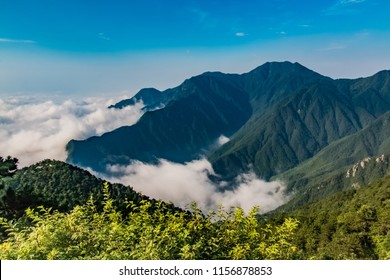
An Essential Guide to Visiting Lushan Scenic Area
In This Guide
- An Essential Guide to Visiting Lushan Scenic Area
- The Rich History and Legends of Lushan Scenic Area
- Main Highlights: What You Absolutely Can’t Miss
- Planning Your Visit: A Practical Guide
- Tickets: Prices, Booking, and Tips
- How to Get There: A Complete Transportation Guide
- Local Cuisine and Accommodation Nearby
- Frequently Asked Questions
- Final Thoughts on Your Trip
Nestled in the heart of Jiangxi Province, the Lushan Scenic Area (九江庐山风景名胜区) beckons travelers with its breathtaking landscapes and rich historical significance. This UNESCO World Heritage Site, often referred to as Mount Lushan, is renowned for its dramatic peaks, serene lakes, cascading waterfalls, and lush vegetation. It is not just a feast for the eyes; Lushan is a cultural tapestry woven with threads of Buddhism and Taoism, offering visitors a glimpse into the spiritual heritage of China.
As you embark on your journey to Lushan, prepare to be captivated by its stunning natural beauty, which has inspired poets and artists for centuries. The area is home to over 2,400 species of plants and 2,000 species of insects, making it a paradise for nature lovers and a critical site for ecological study.
Why Visit Lushan?
-
Natural Splendor: Experience the awe-inspiring landscapes that include towering peaks such as Five Old Men Peak and tranquil spots like Ruqin Lake. Each corner of Lushan is a picturesque scene waiting to be captured.
-
Cultural Richness: Lushan is dotted with historical sites and temples that reflect its significance in Chinese culture. Highlights include the Lushan Conference Site and the Lushan Museum, which delve into the area’s historical narratives.
-
Recreational Opportunities: Whether you seek adventurous hikes through lush trails or leisurely strolls by serene lakes, Lushan offers a variety of activities for every type of traveler. The scenic bus routes make exploring the park’s highlights easier than ever.
-
A Unique Climate: Lushan’s high elevation provides a refreshing climate, making it an ideal escape during the hot summer months. The natural beauty combined with cooler temperatures offers a rejuvenating experience.
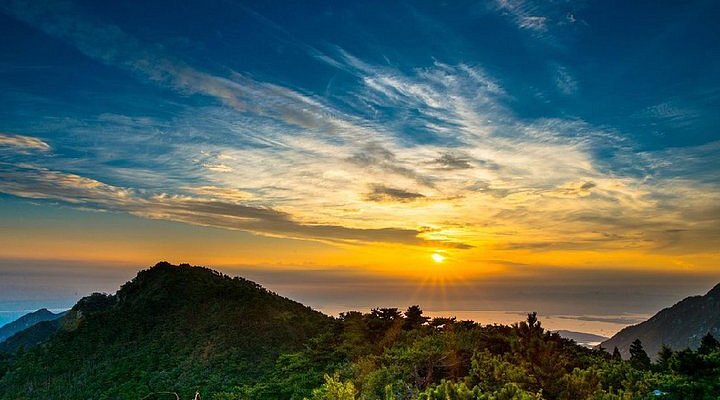
Lushan Scenic Area.
Planning Your Visit
To fully embrace everything Lushan has to offer, here are some essential tips:
-
Getting There: The journey often begins in the nearby city of Jiujiang. Buses frequently run from Jiujiang Long Distance Bus Station to Lushan, taking about 1.5 hours and costing around 16.50 RMB.
-
Entrance Fee: Prepare for an entrance fee of 180 RMB, which grants you access to the scenic wonders that await.
-
Accommodation: The charming Guling Town at the mountain’s summit offers a range of lodging options, from luxurious villas to budget-friendly hostels, ensuring a comfortable stay for all travelers.
-
Transportation Within the Area: To navigate the expansive park, consider purchasing a sightseeing bus card for 70 RMB, which allows unlimited travel on designated routes for seven days.
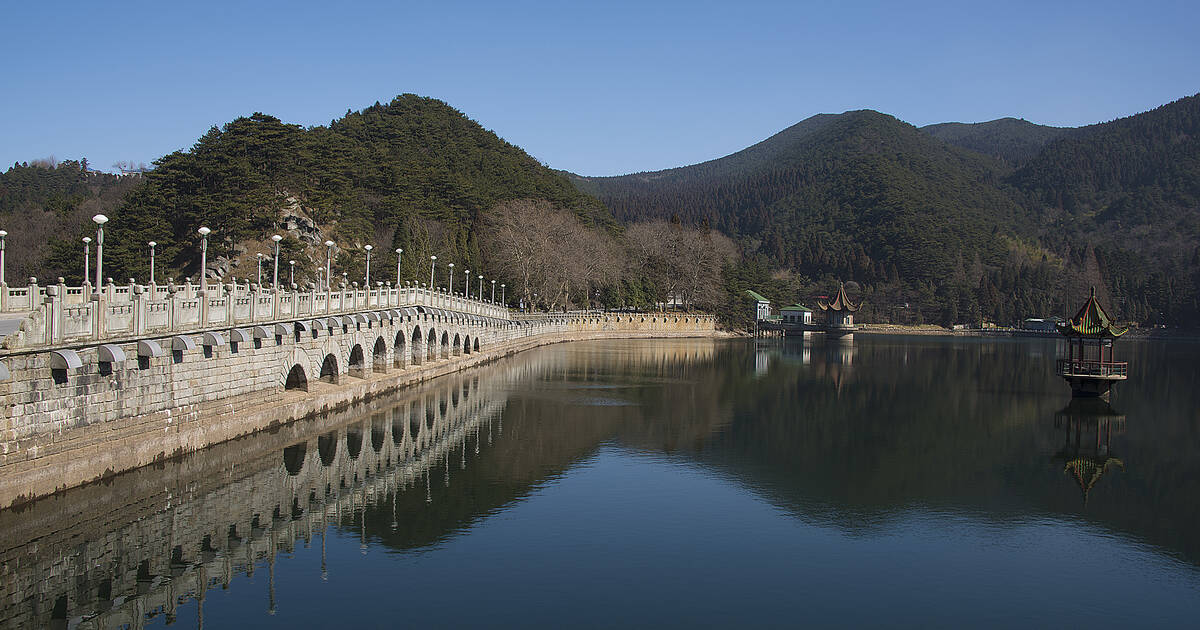
Lushan Scenic Area.
As you step into Lushan, be prepared to immerse yourself in a blend of natural beauty and cultural heritage that is truly unparalleled. Your journey here promises not only to refresh your spirit but also to deepen your understanding of Chinese history and its enduring connection to nature.
The Rich History and Legends of Lushan Scenic Area
Lushan Scenic Area, renowned for its breathtaking landscapes and rich cultural heritage, is a treasure trove of history and legends that dates back thousands of years. Nestled in Jiangxi Province, this majestic mountain range has captivated poets, scholars, and travelers alike, making it a significant site in Chinese history.
Ancient Roots
Lushan’s history can be traced back to the Han Dynasty (206 BCE – 220 CE), when it was referred to as “Lushan,” meaning “Mount Lu.” The mountain quickly became a revered site for its natural beauty and spiritual significance. It was during this period that Lushan began to attract scholars and poets who sought inspiration in its serene environment. The mountain has been immortalized in countless works of literature, most notably by the famous Tang Dynasty poet Li Bai, whose verses celebrated the ethereal beauty of Lushan and its surroundings.
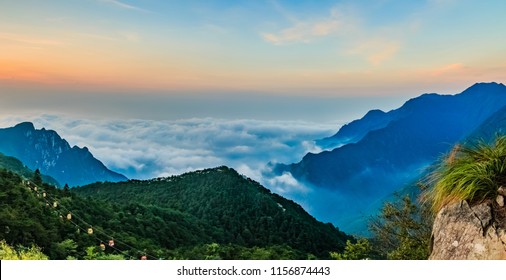
Lushan Scenic Area.
A Spiritual Haven
The Lushan Scenic Area is home to several prominent Buddhist and Taoist temples, which further enhances its historical significance. Among them is the Guling Temple, built during the Tang Dynasty. This temple has served as a tranquil retreat for monks and pilgrims, offering a glimpse into the spiritual practices that have thrived in this area for centuries. The fusion of Buddhism and Taoism is a defining characteristic of Lushan, making it a site of pilgrimage for those seeking enlightenment.
The Legend of the Five Old Men Peak
One of the most famous legends associated with Lushan is that of the Five Old Men Peak (Wulao Feng). According to local folklore, five immortal sages once visited the mountain, drawn by its enchanting beauty. Upon their arrival, they were so taken by the landscape that they decided to remain there forever, transforming into the five towering peaks that now grace the skyline. Each peak is said to represent one of the sages, embodying their wisdom and eternal presence. This legend reflects the deep connection between nature and spirituality that permeates the culture of Lushan.
The Influence of European Scholars
In the late 19th and early 20th centuries, Lushan gained international recognition as a summer retreat for foreign diplomats and scholars. The establishment of the Lushan Conference in 1959 further solidified its historical importance. This conference brought together leaders from the Communist Party of China, making significant decisions that influenced the future of the nation. The conference site now serves as a museum, showcasing the area’s modern political history.
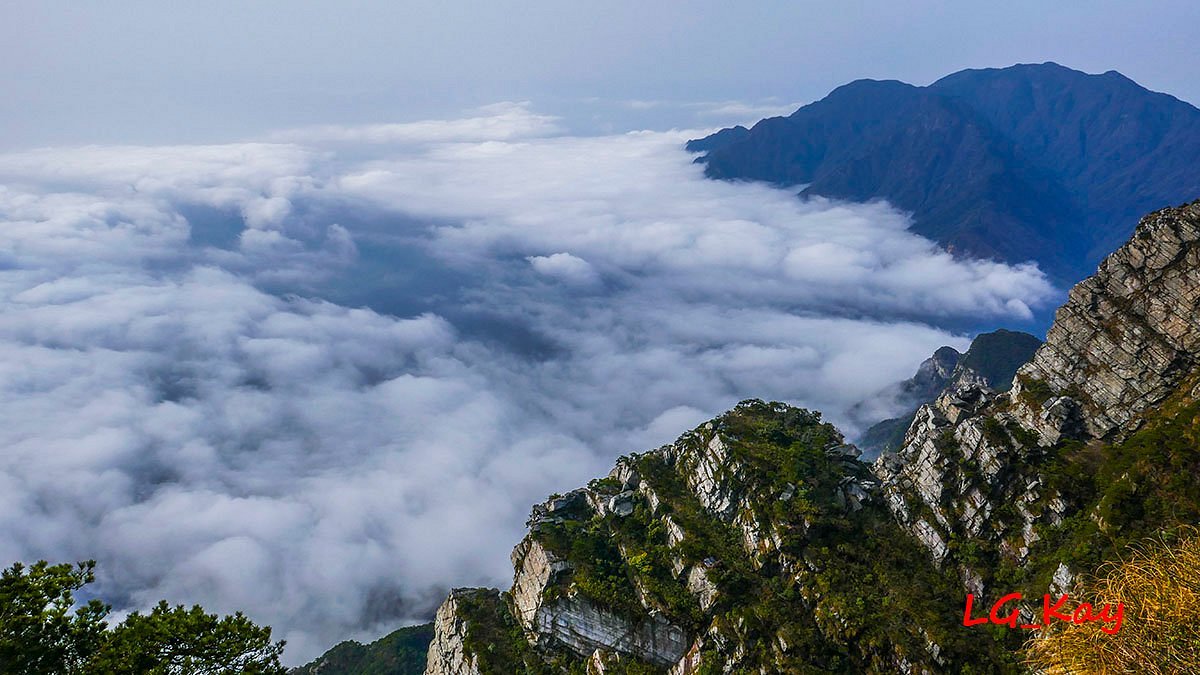
Lushan Scenic Area.
Cultural Integration
The diverse cultural influences that have shaped Lushan over the centuries are evident in its architecture, cuisine, and traditions. The Meilu Villa, once the summer home of prominent figures, stands as a testament to the blend of Western and Eastern styles. Visitors can explore the villa’s gardens, which boast an array of flora from different parts of the world, reflecting the area’s historical connections with international travelers.
Conclusion
Lushan Scenic Area is more than just a beautiful mountain; it is a living tapestry of history, legends, and cultural exchanges. For international travelers seeking to immerse themselves in Chinese history and culture, Lushan offers a unique opportunity to explore the profound connections between nature, spirituality, and human endeavor. Whether hiking its trails or visiting its ancient temples, each experience resonates with the rich heritage that defines this remarkable landscape.
Main Highlights: What You Absolutely Can’t Miss
Discover the Unmissable Wonders of Lushan Scenic Area
Nestled in the heart of Jiangxi Province, the Lushan Scenic Area (九江庐山风景名胜区) is a stunning testament to China’s rich natural beauty and cultural heritage. Known for its breathtaking landscapes, historical significance, and tranquil atmosphere, Lushan offers a plethora of unforgettable experiences. Here are the main highlights that every traveler should not miss.
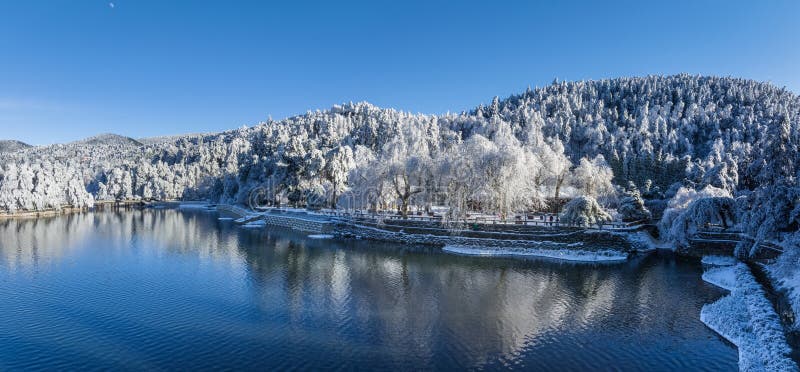
Lushan Scenic Area.
1. Five Old Men Peak (五老峰)
A symbolic representation of Lushan, Five Old Men Peak is a must-visit for its distinctive rock formations resembling five elderly men seated in contemplation. The hike to the summit rewards visitors with panoramic views of the surrounding landscape, making it a perfect spot for photography and reflection.
2. Sandiequan Waterfall (三叠泉)
This mesmerizing three-tiered waterfall cascades down the mountainside, creating a symphony of sound that enchants all who visit. The surrounding lush greenery adds to the area’s natural charm, making it an ideal picnic spot. Be sure to bring your camera to capture this picturesque gem.
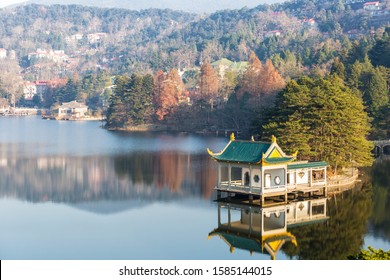
Lushan Scenic Area.
3. Ruqin Lake (如琴湖)
Known for its serene beauty, Ruqin Lake is shaped like a traditional Chinese musical instrument, the guqin, which adds to its allure. Visitors can enjoy leisurely boat rides across the lake, surrounded by stunning mountain vistas. The tranquil atmosphere makes it a perfect spot for relaxation and contemplation.
4. Lushan Museum (庐山博物馆)
For those interested in history, the Lushan Museum offers a glimpse into the area’s rich past. The museum showcases artifacts, photographs, and documents that chronicle Lushan’s cultural and historical significance, particularly during the Republican era and the Communist Party’s early years in China.
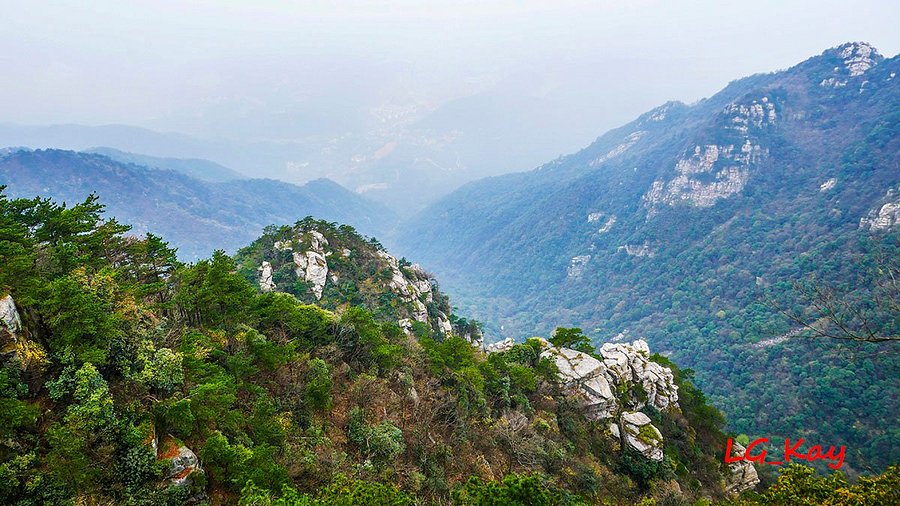
Lushan Scenic Area.
5. Lushan Conference Site (周恩来纪念馆)
This historical site is where the famous Lushan Conference took place in 1959. It is dedicated to Zhou Enlai, China’s first Premier, and provides insight into the political history of the country during a pivotal time. Visitors can explore the grounds and learn about significant events that shaped modern China.
6. Meilu Villa (美庐别墅)
Once the summer residence of notable political figures, Meilu Villa is a beautiful example of early 20th-century architecture. Surrounded by gardens and scenic views, it offers a peek into the lifestyle of the Chinese elite during that era. The villa is also home to various exhibitions related to China’s revolutionary history.

Lushan Scenic Area.
7. Heavenly Bridge (天桥)
Connecting two cliffs, the Heavenly Bridge is an architectural marvel that offers breathtaking views from above. The bridge is particularly stunning at sunset, when the sky is painted with hues of orange and purple. It’s a fantastic spot for nature lovers and photography enthusiasts looking to capture the magic of Lushan.
8. Jinxiu Valley (锦绣谷)
This picturesque valley is renowned for its vibrant flora and fauna, making it a haven for nature lovers and hikers. The well-preserved trails allow visitors to explore the diverse ecosystems while enjoying the tranquility of the forest. Be sure to take a moment to appreciate the stunning views of the valley floor.
Practical Tips for Visiting Lushan
- Getting There: Accessible via Jiujiang, the journey typically involves a scenic bus ride that offers glimpses of the stunning landscapes leading up to the mountain.
- Transportation: Once in Lushan, consider purchasing a sightseeing bus card for convenient travel around the scenic area. The card provides unlimited rides for a specified period, allowing you to explore at your own pace.
- Accommodation: Guling Town, located at the peak, offers a range of hotels and guesthouses catering to different budgets. It’s advisable to book in advance during peak seasons.

Lushan Scenic Area.
Final Thoughts
Lushan Scenic Area is not just a feast for the eyes but also a rich tapestry of history, culture, and natural wonders. Whether you’re hiking the trails, soaking in the views, or delving into the area’s historical sites, Lushan promises an unforgettable experience that captures the essence of China’s natural beauty and cultural depth. Don’t forget to take a moment to simply breathe in the fresh mountain air and soak in the serenity of this enchanting destination.
Planning Your Visit: A Practical Guide
Your Essential Guide to Visiting the Lushan Scenic Area
Nestled in Jiangxi Province, the Lushan Scenic Area (九江庐山风景名胜区) is a breathtaking blend of natural beauty and rich cultural heritage. Famous for its stunning peaks, serene lakes, and historical temples, this mountainous retreat offers a unique glimpse into China’s natural landscape and the philosophical traditions of Buddhism and Taoism. Here’s everything you need to know to plan your visit effectively.
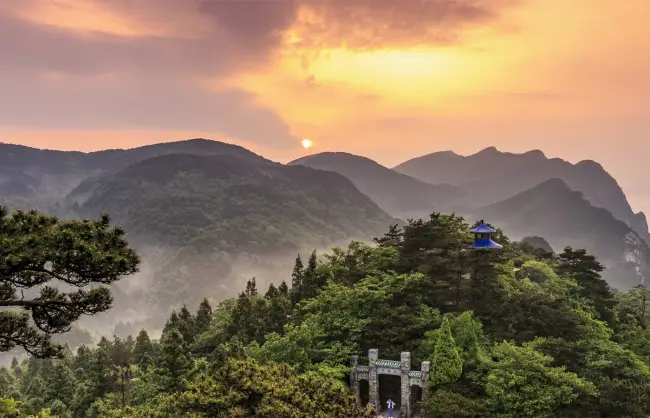
Lushan Scenic Area.
Getting There
By Train and Bus:
– From Nanchang: The most convenient way to reach Lushan is by taking a train from Nanchang to either Jiujiang or directly to Lushan. Once at Jiujiang, head to the Long Distance Bus Station where you can catch a bus to Lushan (approximately 1.5 hours). The fare is around ¥16.50.
– Entry Point: Most visitors arrive at the Tourist Service and Transfer Centre to purchase their entrance ticket (¥180) before continuing to Guling Town (牯岭镇), the primary hub for accommodation and access to the scenic spots.
By Air:
– The nearest airport is Nanchang Changbei International Airport. From there, you can take a taxi or a train to Jiujiang, followed by the bus mentioned above.
Accommodation
Where to Stay:
Guling Town is the main area for lodging, offering various hotels and guesthouses to suit different budgets. Popular options include:
– Lushan Tianjie Villa (廬山天街別墅) – A comfortable stay with beautiful views.
– Hostels – Affordable options starting from ¥60 per night, although booking in advance is advisable during peak seasons.
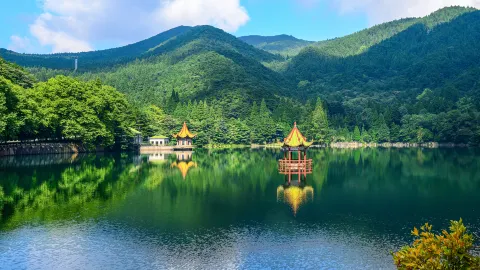
Lushan Scenic Area.
Getting Around
Sightseeing Buses:
– To explore the scenic area, purchase a sightseeing bus card for ¥70, which grants unlimited rides for 7 days. There are two main routes: the Eastern and Western routes. Buses are frequent, but it’s best to inform the driver of your stop to ensure they don’t skip it.
Must-See Attractions
Eastern Route Highlights:
– Five Old Men Peak (五老峰): A stunning hike with spectacular vistas.
– Three-Tiered Waterfall (三叠泉): A mesmerizing waterfall that offers perfect photo opportunities.
– Lushan Museum (庐山博物馆): Delve into the history and culture of the region.
– Lushan Conference Site: A historical site with significant political importance.
Western Route Highlights:
– Ruqin Lake (如琴湖): A picturesque lake perfect for a leisurely stroll.
– Jinxiu Valley (锦绣谷): A scenic area known for its lush greenery and tranquility.
– Black Dragon Pool (乌龙潭): An ideal spot to relax and enjoy nature’s beauty.
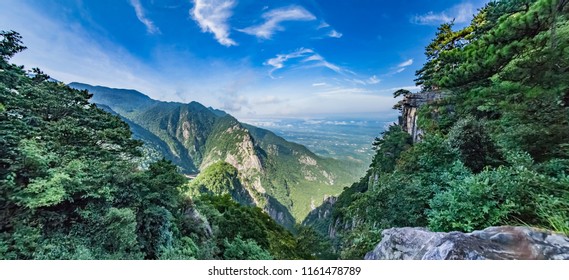
Lushan Scenic Area.
Tips for Your Visit
- Weather: Lushan has a temperate climate, but it can be unpredictable. Bring layers, especially if you plan on hiking, as temperatures can drop in the mountains.
- Transportation: Be prepared for winding roads if you’re taking the bus up the mountain. Travelers have noted the journey can be quite bumpy, so consider taking motion sickness medication if you’re prone to nausea.
- Cultural Etiquette: Respect local customs, especially when visiting temples. Dress modestly and maintain a quiet demeanor in sacred spaces.
Conclusion
Lushan Scenic Area is not just a feast for the eyes but also a journey through the rich tapestry of Chinese culture and history. Whether you’re hiking the peaks, visiting ancient temples, or simply soaking in the stunning landscapes, your time in Lushan will undoubtedly be unforgettable. With this guide in hand, you’re well-prepared to embark on this enchanting adventure. Happy travels!
Tickets: Prices, Booking, and Tips
When planning your visit to the breathtaking Lushan Scenic Area, understanding the ticketing process and associated costs is crucial for a seamless experience. Here’s everything you need to know about prices, booking, and some handy tips for your journey.
Entrance Fees
-
General Admission: The entrance fee for Lushan Scenic Area is 180 RMB (approximately $28 USD). This ticket grants you access to the stunning landscapes, historical sites, and cultural treasures within the park.
-
Sightseeing Bus Pass: To navigate the park efficiently, consider purchasing a sightseeing bus pass for 70 RMB (approximately $11 USD). This pass is valid for 7 days and allows unlimited rides on the park’s two bus routes, making it easy to explore major attractions without the hassle of walking long distances.
Booking Tickets
-
Purchase Locations: Tickets can be bought at the Tourist Service and Transfer Centre upon arrival. This center is conveniently located at the first stop for buses coming from Jiujiang Long Distance Bus Station. Here, you can also buy your sightseeing bus pass.
-
Online Booking: For added convenience, some travelers prefer to book their entrance tickets online through various travel platforms. Be sure to check availability and any potential discounts.
Transportation Tips
-
Getting There: If you’re traveling from Jiujiang, buses regularly run to the Lushan Scenic Area, costing about 16.50 RMB (approximately $2.50 USD) for a one-way ticket. The bus ride typically lasts around 1.5 hours.
-
Bus Ride to the Park: The journey up the mountain can be winding and may cause motion sickness for some. If you’re prone to nausea, consider taking anti-motion sickness medication before your trip.
Accommodation Insights
- Where to Stay: Most visitors opt to stay in Guling Town, situated at the summit of Lushan. This area offers a range of accommodations from luxury hotels to budget hostels. Prices typically start around 60 RMB (approximately $9 USD) for hostels, while mid-range hotels can be found for around 300 RMB (approximately $45 USD).
Exploring the Area
- Plan Your Itinerary: With so much to see, it’s beneficial to plan your visit. If you only have one day, focus on the major attractions such as Five Old Men Peak, Sandiequan Waterfall, and Ruqin Lake. For a more in-depth exploration, consider dedicating two days to cover both the eastern and western routes of the park.
Final Tips
-
Local Culture: Embrace the local culture by trying regional foods available in Guling Town. Engaging with local vendors can also enhance your experience and provide insights into the rich history of the area.
-
Stay Hydrated and Wear Comfortable Shoes: The park features numerous hiking trails and scenic spots, so be prepared for an active day. Bring water and wear sturdy footwear to enjoy your exploration comfortably.
With its stunning vistas and rich cultural heritage, the Lushan Scenic Area is a must-visit for any traveler interested in the beauty and history of China. By planning ahead and understanding the ticketing process, you can ensure a memorable adventure in this enchanting locale.
How to Get There: A Complete Transportation Guide
Getting to Lushan Scenic Area: Your Comprehensive Transportation Guide
Nestled in the heart of Jiangxi Province, Lushan Scenic Area (九江庐山风景名胜区) offers a breathtaking blend of natural beauty and rich cultural heritage. As an international traveler eager to explore this stunning destination, understanding your transportation options is crucial for a seamless journey. Here’s your comprehensive guide to getting to and around Lushan.
Arrival in Jiangxi Province
1. By Air:
The nearest major airport is Nanchang Changbei International Airport (KHN), located approximately 200 kilometers from Lushan. Regular flights connect Nanchang with major cities across China and select international destinations. From the airport, you have several options to reach Lushan:
- Taxi: Direct taxis are available, but be cautious of high fares (often around 300 RMB).
- Train: Take a taxi or shuttle to Nanchang West Railway Station and board a train to Jiujiang, which takes about 1.5 hours.
2. By Train:
If you’re already in China, consider taking a train to Jiujiang Railway Station. This station is well connected to major cities like Shanghai, Beijing, and Hangzhou. The journey offers an opportunity to experience China’s efficient rail system.
Getting to Lushan
Once in Jiujiang, the scenic journey to Lushan begins:
1. Long-Distance Bus:
– Departure Point: Head to the Jiujiang Long Distance Bus Station. Buses to Lushan depart frequently.
– Duration: The ride takes approximately 1.5 hours.
– Cost: Ticket prices are around 16.50 RMB.
– Stop: Buses typically make a stop at the Tourist Service and Transfer Centre, where you can purchase an entrance ticket to Lushan for 180 RMB.
– Final Stop: The bus will drop you off at a large square in Guling Town (牯岭镇), the main hub for visitors at the top of Lushan.
2. Shuttle Buses:
Upon arriving in Guling Town, you can use the local sightseeing bus service to explore the scenic area:
– Sightseeing Bus Card: Purchase a card for 70 RMB, which grants you unlimited rides for 7 days. There are two bus routes (eastern and western) that connect major attractions.
– Bus Stops: The main interchange for the sightseeing buses is at the square in Guling Town. Staff will assist with scanning cards and directing you to the correct bus.
Exploring Lushan
Once you’ve arrived and settled in Guling Town, you’ll find a range of options for exploring Lushan:
1. Hiking and Walking:
Lushan is famous for its stunning hiking trails. Be prepared for steep paths and scenic views. Popular spots include:
– Five Old Men Peak (五老峰)
– Three-Tiered Waterfall (三叠泉)
– Ruqin Lake (如琴湖)
2. Local Transportation:
Utilize the sightseeing buses mentioned above to reach various attractions easily. Note that the winding roads can be challenging to navigate, so plan your trips accordingly.
Return Journey
To return to Jiujiang or Nanchang:
– Bus from Guling Town: Simply head back to the bus stop where you arrived. Buses run regularly throughout the day.
– Train from Jiujiang: If returning to Nanchang, take a taxi from the bus station to Jiujiang Railway Station, catching a train back to your next destination.
Final Tips
- Travel Insurance: Always a good idea when exploring remote areas.
- Cash: Having some cash on hand is advisable, as not all vendors accept cards.
- Local Support: Don’t hesitate to ask locals or staff for help with transportation; they are often eager to assist.
By following this guide, you’ll find that reaching Lushan Scenic Area is not only manageable but also part of the adventure. Prepare for stunning landscapes, rich history, and unforgettable experiences in one of China’s most beautiful national parks. Happy travels!
Local Cuisine and Accommodation Nearby
Savoring Local Flavors and Finding Your Home Base in Lushan
Nestled within the breathtaking landscapes of Mount Lushan, Guling Town serves as the perfect gateway for travelers eager to explore both the natural wonders and rich cultural heritage of this iconic region. To enhance your visit, indulging in the local cuisine and securing comfortable accommodations can make your experience even more memorable.
Culinary Delights to Discover
As you explore Lushan, you’ll find a vibrant food scene that reflects the flavors of Jiangxi province. Here are some dishes and eateries that you simply must try:
-
Lushan Fried Rice (庐山炒饭): A local twist on a classic, this dish incorporates fresh vegetables and local meats, all stir-fried to perfection. Look for restaurants like Lushan Tianjie Restaurant, where this dish is a standout.
-
Steamed Fish from Poyang Lake (鄱阳湖蒸鱼): The proximity to Poyang Lake means that fresh fish is a must-try. Many eateries offer this delicacy, often cooked with local herbs and spices. Meilu Villa Restaurant is known for its exquisite preparation.
-
Jiangxi Noodles (江西面): These hand-pulled noodles, often served in a savory broth or stir-fried, are a staple in the area. Yunyang Noodle House is a popular spot among locals for a hearty bowl.
-
Mountain Vegetables (山野菜): Don’t miss the seasonal mountain greens, which are often stir-fried or served in soups. They are not only delicious but also packed with nutrients.
-
Local Snacks: Be sure to try Zongzi (粽子), glutinous rice dumplings wrapped in bamboo leaves, which are particularly popular among visitors. Vendors around Guling Town often sell these treats fresh.
Where to Stay: Comfortable Accommodations
Guling Town offers a range of lodging options that cater to different budgets and preferences. Here are some highly recommended places to consider:
-
Lushan Tianjie Villa (庐山天街别墅): This charming villa provides a cozy atmosphere with stunning views of the surrounding mountains. It’s a popular choice for those seeking comfort and convenience, just a stone’s throw from local attractions.
-
Lushan International Hotel (庐山国际大酒店): For a more luxurious experience, this hotel boasts modern amenities and a panoramic view of the scenic area. It’s ideal for travelers looking for a touch of sophistication amidst nature.
-
Hostels and Guesthouses: If you’re traveling on a budget, there are numerous hostels such as Lushan Youth Hostel. These offer a more communal experience and are perfect for meeting fellow travelers.
-
Local Homestays: For an authentic experience, consider staying with a local family. Several homestays are available in the area, providing not just a place to sleep, but also a chance to experience local culture firsthand.
Conclusion
Whether you’re hiking the stunning trails of Mount Lushan or relaxing in the serene surroundings of Guling Town, indulging in local foods and comfortable accommodations will enhance your journey. With its rich culinary offerings and hospitable places to stay, Lushan is sure to leave you with lasting memories of your travels in this beautiful corner of China.
Frequently Asked Questions
Frequently Asked Questions about Lushan Scenic Area
1. What is the best time to visit Mount Lushan?
The ideal time to visit Mount Lushan is during the spring (April to June) and autumn (September to November) months. During these seasons, the weather is mild, and the natural scenery is at its most vibrant, with blooming flowers in spring and colorful foliage in autumn. Summer can be hot and humid, while winter may bring snowfall, transforming the area into a winter wonderland.
2. How do I get to Lushan Scenic Area?
To reach Lushan from major cities like Nanchang or Jiujiang, you can take a bus or train. Buses from Jiujiang Long Distance Bus Station take about 1.5 hours. Upon arrival, you will need to purchase an entrance ticket at the Tourist Service and Transfer Centre before taking a sightseeing bus to explore the area.
3. What are the main attractions within Lushan?
Lushan is home to several stunning natural and cultural attractions, including:
– Five Old Men Peak (五老峰): A striking peak that offers breathtaking views.
– Three-Tiered Waterfall (三叠泉): A beautiful waterfall ideal for photography.
– Ruqin Lake (如琴湖): A serene lake surrounded by lush greenery.
– Lushan Museum (庐山博物馆): Showcasing the area’s rich cultural heritage.
– Meilu Villa (美庐别墅): A historic villa that reflects the architectural style of the early 20th century.
4. Are there accommodations available in Lushan?
Yes, Lushan offers a range of accommodations from budget hostels to mid-range hotels. Guling Town (牯岭镇) is the main area where most visitors stay, providing convenient access to various attractions. It’s advisable to book in advance during peak seasons.
5. What should I wear and bring when visiting Lushan?
Dress in layers, as temperatures can fluctuate throughout the day. Comfortable hiking shoes are essential for exploring the mountainous terrain. Don’t forget to bring water, sunscreen, and a camera to capture the stunning landscapes. If you plan to hike, a small backpack with snacks and a first-aid kit is also recommended.
6. Is there public transportation within Lushan?
Yes, Lushan has a sightseeing bus service that covers major attractions in the area. You can buy a bus card that allows unlimited rides for seven days. The buses operate two main routes—eastern and western—making it easy to explore the park without the hassle of driving.
7. Are there guided tours available?
Yes, there are numerous private and group tours available for visitors who prefer a guided experience. These tours often include transportation, knowledgeable guides, and itineraries that cover the main attractions. Consider booking in advance, especially during peak travel seasons.
8. What safety precautions should I consider while hiking in Lushan?
While hiking, always stay on marked trails and be cautious of steep and rocky areas. It’s advisable to hike with a friend or group, especially if you’re unfamiliar with the terrain. Keep an eye on the weather, and if conditions worsen, be ready to turn back. Carry a fully charged mobile phone and inform someone of your hiking plans.
Final Thoughts on Your Trip
As your journey through the breathtaking Lushan Scenic Area comes to a close, take a moment to reflect on the myriad experiences that have shaped your visit. Nestled in Jiangxi Province, Mount Lushan is not merely a destination; it is a captivating tapestry woven from history, culture, and natural beauty.
A Journey Through Time and Nature
From the majestic peaks and serene lakes to the ancient temples that whisper tales of Buddhism and Taoism, every corner of Lushan tells a story. The rich biodiversity, with over 2,400 plant species and 2,000 insect species, offers a glimpse into China’s unique ecological heritage. As you strolled through the lush greenery, you were likely reminded of the profound connection between nature and the spiritual traditions that flourish here.
Cultural Connections
Engaging with the local culture adds another layer to your experience. Whether you explored the historical sites that bear witness to significant events in Chinese history or savored the local cuisine, you were partaking in a legacy that spans centuries. This region’s significance as a retreat for scholars and artists provides insight into the profound role that nature has played in shaping Chinese intellectual and artistic movements.
Plan Your Next Adventure
As you contemplate your next travel destination, consider the many adventures that await in Lushan. Perhaps you will return to tackle new hiking trails or to witness the stunning seasonal changes that transform the landscape. With each visit, there are new memories to create, and fresh perspectives to gain.
Final Thoughts
In closing, the Lushan Scenic Area is a reminder of the beauty that lies in the harmony of man and nature. It is a place where every traveler can find inspiration, whether through the awe-inspiring vistas, the historical landmarks, or the warmth of local hospitality. As you leave this enchanting mountain, carry with you the stories and experiences that will undoubtedly enrich your journey through life. Safe travels, and may your next adventure be just as extraordinary!